Bulk Purchasing of Nicotine Products: A Strategic Guide to the NIC-SAFE Pouches Market
As the global nicotine market continues to mature, the demand for smokeless alternatives like NIC-SAFE pouches has surged among consumers and wholesalers alike. For businesses seeking to purchase these products in bulk, however, the process is far from straightforward. From navigating procurement channels and understanding regional pricing dynamics, to selecting between white label and OEM production models, every decision has a direct impact on product quality, compliance, and cost-efficiency.
This guide offers a structured overview to help procurement managers, brand developers, and wholesale buyers make informed choices when sourcing nicotine products at scale.
Navigating Global Procurement Channels
Procurement strategies for nicotine products differ significantly by region, shaped largely by manufacturing regulations, labor costs, and supply chain infrastructure.
U.S. Manufacturers: Compliance and Assurance
U.S.-based nicotine manufacturers are governed by FDA protocols, ensuring product consistency, traceability, and safety. For buyers prioritizing regulatory alignment and faster domestic delivery, U.S. suppliers offer strong advantages, albeit at a higher unit cost due to labor and operational overhead.
China-Based Factories: Scale and Pricing
On the other hand, Chinese nicotine factories dominate the global volume market, supplying both liquid nicotine and finished pouch products at highly competitive prices. Bulk orders benefit from lower per-unit costs, although longer lead times and communication barriers may add layers of operational complexity.
Hybrid Approach
For companies seeking a balance, collaborating with trusted sourcing platforms—such as Snufffactory—can help bridge the gap, offering both domestic support and access to vetted international suppliers.
Breaking Down the Cost Structure
Bulk purchasing of nicotine products involves several interrelated cost components. Understanding these helps you assess true supplier value beyond just quoted prices:
Equipment Investment
The machinery used for pouch filling, nicotine infusion, and sealing contributes significantly to setup and per-unit costs. More advanced nicotine preparation methods often result in a cleaner, more stable product, but require higher equipment capital.
Raw Materials
Nicotine itself, whether synthetic or tobacco-derived, forms the core input cost. Additional materials like pouches, flavorings, filters, and film labels also impact pricing—particularly for customized or premium product lines.
Manufacturing and Testing
Quality assurance, stability testing, and batch consistency monitoring add to overall process costs. Reputable nicotine manufacturers invest in strict internal controls to comply with both regulatory and client requirements.
Packaging and Compliance
Child-resistant packaging, multilingual labeling, and health warnings—as required in many markets—should be factored into final pricing, particularly when selling across borders.
Choosing Between White Label and OEM Models
Selecting the right production model depends on your business strategy, time-to-market goals, and budget allocation:
White Label
White label products are pre-formulated and ready for market. You simply apply your own brand and packaging design. This model suits:
New market entrants
Distributors looking for rapid deployment
Businesses with limited R&D or design resources
It allows for lower MOQs (minimum order quantities) and faster lead times but offers limited customization.
OEM (Original Equipment Manufacturing)
OEM partnerships allow for full customization of ingredients, pouch materials, strength levels, and packaging. Although OEM development involves higher upfront costs and longer production cycles, it offers:
Complete product differentiation
Exclusive formulations
Stronger brand positioning in competitive markets
OEM is ideal for brands with specific functional or sensory targets and sufficient operational capacity.
From Inquiry to Delivery: The Ordering Process
Bulk procurement goes well beyond placing a simple order. The process typically includes the following steps:
Initial Contact
Reach out to a reputable supplier via platforms like Snufffactory’s contact form. Outline your product needs, target pricing, and desired lead times.
Sample Evaluation
Request product samples to evaluate factors such as pouch texture, flavor stability, nicotine release, and packaging durability.
Specification Alignment
Once satisfied with samples, define product specifications—including nicotine content, flavors, packaging format, and labeling requirements.
Quote and Contract
Agree on unit pricing, shipping terms, MOQs, and payment structure. Reputable nicotine patch manufacturers will provide detailed pro forma invoices or formal contracts.
Production and Fulfillment
After confirmation, your order enters production. During this phase, maintain communication to ensure timelines are met and quality standards are upheld.
Shipping and After-Sales
Coordinate shipping logistics, track delivery, and clarify any post-sale support or claims procedures in advance.
Final Thoughts
Bulk purchasing of nicotine products—particularly emerging formats like NIC-SAFE pouches—requires a blend of market knowledge, logistical planning, and regulatory awareness. By understanding the nuances of supplier selection, cost breakdown, and production models, your business can secure a reliable, high-quality product line while optimizing for margins and operational efficiency.
Whether you choose to work with a domestic nicotine manufacturer or source directly from an overseas nicotine factory, success lies in strategic preparation, diligent sampling, and transparent partnerships.
For tailored guidance or to begin sourcing NIC-SAFE pouches, visit Snufffactory’s product portal.


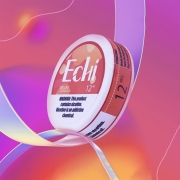
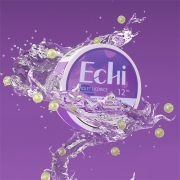
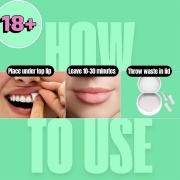


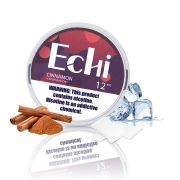
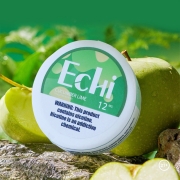


Leave a Reply
Want to join the discussion?Feel free to contribute!